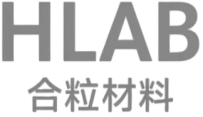1. Material Overview: Why 4J32 Dominates Precision Engineering
4J32, also known as Super Invar alloy, is a Fe-Ni-Co-based precision material designed for scenarios requiring near-zero dimensional changes under temperature fluctuations-4-6-7. Its core advantage lies in an ultra-low thermal expansion coefficient (α ≤1.0×10⁻⁶/°C at 20–100°C), outperforming conventional Invar 4J36 in critical temperature ranges-4-7.
Key Performance Metrics vs. Competing Alloys
| Property | 4J32 (Super Invar) | 4J36 (Standard Invar) | Application Impact |
|---|---|---|---|
| CTE (20–100°C) | ≤1.0×10⁻⁶/°C | 1.2–1.8×10⁻⁶/°C | 50% better stability in optics mounts |
| Melting Range | 1430–1450°C | 1420–1450°C | Suits high-temperature brazing |
| Density | 8.10 g/cm³ | 8.10 g/cm³ | Lightweight for aerospace structures |
| Tensile Strength (Annealed) | 470 MPa | 450 MPa | Higher load capacity in instruments |
| *Data sourced from YB/T 5241-1993 standards-4-6* |
2. Technical Breakthroughs: Decoding 4J32’s Stability Mechanism
2.1 Composition-Driven Low CTE
-
Nickel (31.5–33.0%) + Cobalt (3.2–4.2%): Forms a stable γ-austenite phase, suppressing lattice expansion-4-7.
-
Copper (0.4–0.8%): Enhances organizational stability, critical for cryogenic applications down to -60°C-4-6.
2.2 Heat Treatment Precision
A three-stage process ensures minimal CTE drift-6:
-
Solution Treatment: 840°C ±10°C, 1h → water quenching
-
Stabilization Aging: 315°C ±10°C, 1h → furnace cooling
-
Stress Relief: 530–550°C, 1–2h (for machined parts)
2.3 Military-Aerospace Certification
4J32 complies with GJB (Chinese Military Standards), with ASTM E831/E228 testing validation for CTE reproducibility-2-10. Recent adoption in Shaanxi Aerospace navigation equipment (April 2025 procurement) highlights its reliability-5.
3. Application Spectrum: From Space Telescopes to Semiconductor Tools
3.1 Aerospace & Defense
-
Satellite Optical Systems: Mirrors and mounts in space telescopes (CTE matching silica glass)-4-6.
-
Aircraft Navigation Gyroscopes: Dimensional stability under -60°C to 80°C operational ranges-6-7.
3.2 High-Precision Industrial Equipment
-
Lithography Machines: Semiconductor wafer staging with sub-micron thermal drift control-2-6.
-
Metrology Instruments: Coordinate measuring arms requiring ±0.1μm accuracy-4.
3.3 Energy and Medical Devices
-
Laser Fusion Chambers: Stability under pulsed thermal loads-2.
-
MRI Components: Non-magnetic performance (Curie point: 220°C)-4-7.
4. Procurement & Processing Guidelines
4.1 Supplier Qualification Checklist
-
Certify YB/T 5241-1993 compliance with mill test reports-4-6.
-
Verify vacuum induction melting records to ensure low-oxygen content (<8ppm)-2-6.
-
Demand -60°C/2h stabilization tests to prevent martensitic transformation-4-7.
4.2 Machining Best Practices
-
Welding: Use argon arc welding to avoid composition changes-6.
-
Surface Treatment: Passivate with 25% HCl at 70°C for corrosion resistance-6.
-
Cryogenic Applications: Specify fine-grain structure (ASTM 8-10) to inhibit γ→α phase shift-4.
4.3 Cost Optimization Strategy
-
Nickel Price Monitoring: LME nickel fluctuations directly impact raw material costs-2-7.
-
Total Cost of Ownership: Prioritize certified suppliers despite 10–15% price premiums (avoids recalibration expenses)-2-10.
5. Market Trends & China’s Supply Chain Advancements
-
2025 Demand Surge: Aerospace and semiconductor sectors drive 20% YoY growth-5-7.
-
Localization Progress: Chinese producers like Shanghai Wanghe Metal now supply GJB-certified 4J32 at ¥200–300/kg-4-7.
-
Export Compliance: Dual-use controls apply for military-grade alloys (e.g., navigation systems)-5-10.
Conclusion: Precision Redefined for Next-Generation Technology
4J32 Super Invar exemplifies materials engineering excellence, enabling breakthroughs from space optics to chip manufacturing. With certified Chinese suppliers reducing costs by 30% and military-aerospace adoption accelerating, this alloy is poised to underpin tomorrow’s high-tech infrastructure.
4J32 Alloy: Engineer’s Q&A
Q: How does 4J32 compare to 4J36 in cryogenic environments?
A: 4J32 offers lower CTE at -60–80°C but requires strict composition control to avoid α-martensite formation[citation:4][citation:7].
Q: Can 4J32 be welded without degrading CTE performance?
A: Yes, using argon arc welding with post-weld stabilization at 315°C[citation:6].
